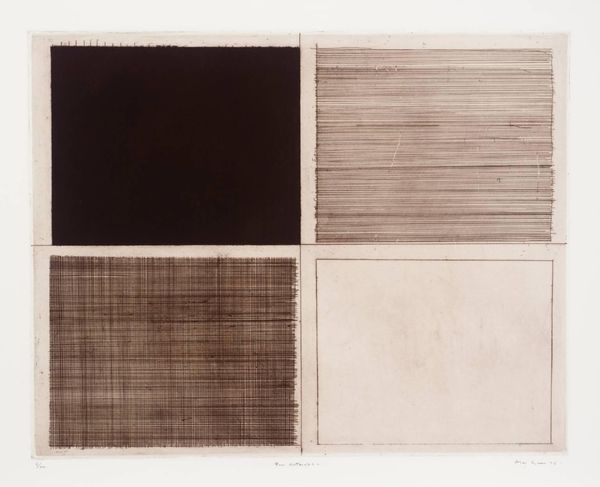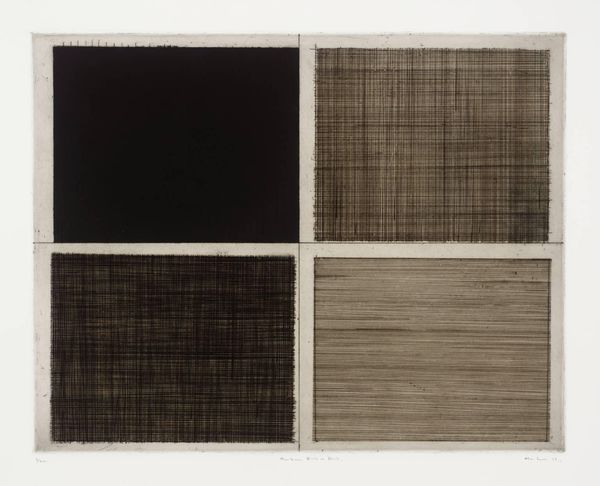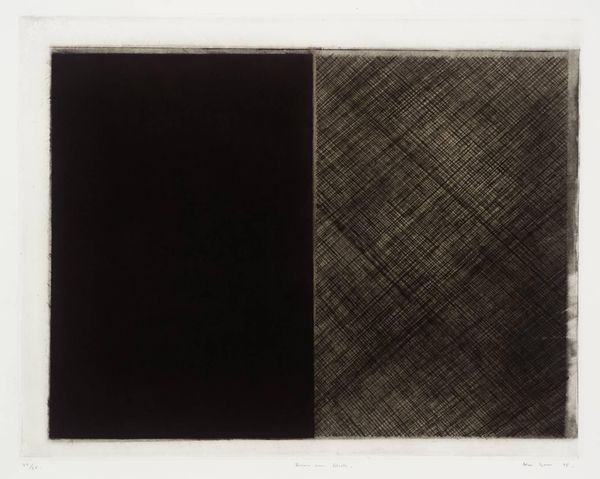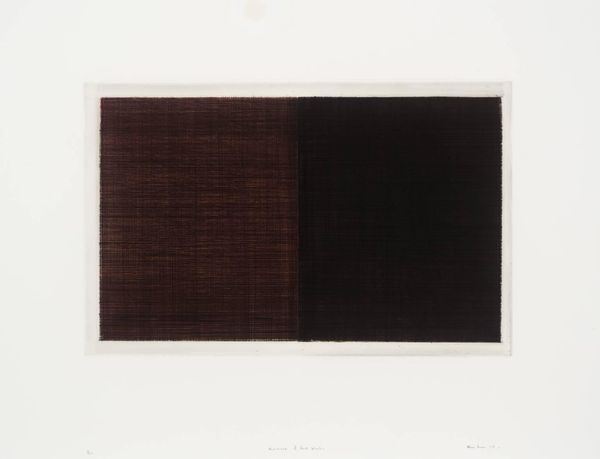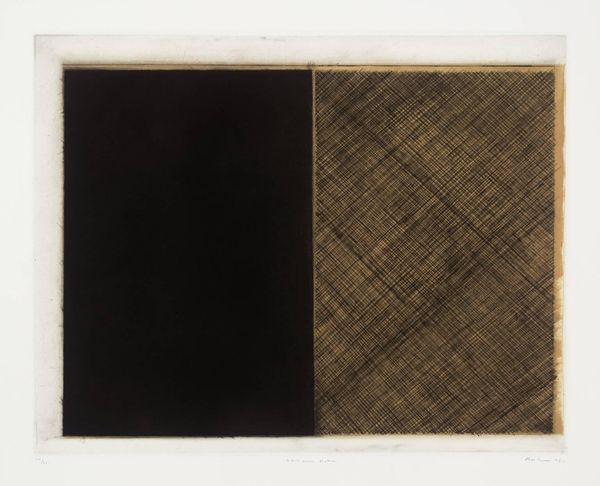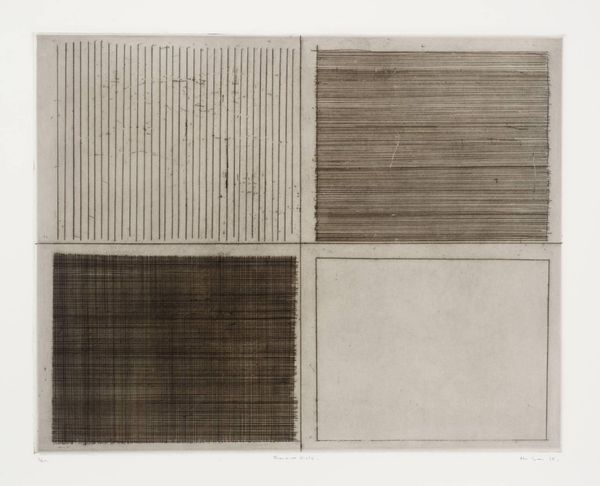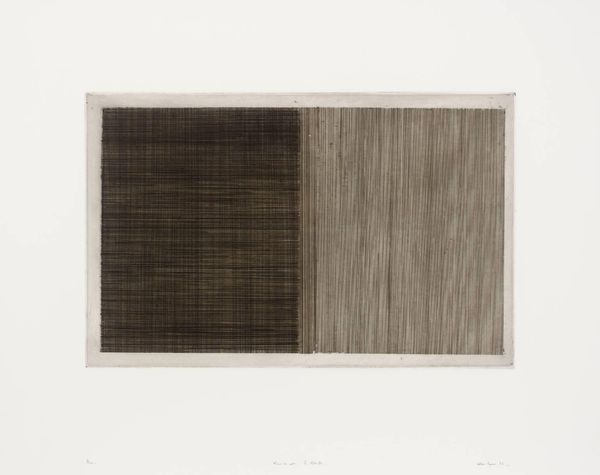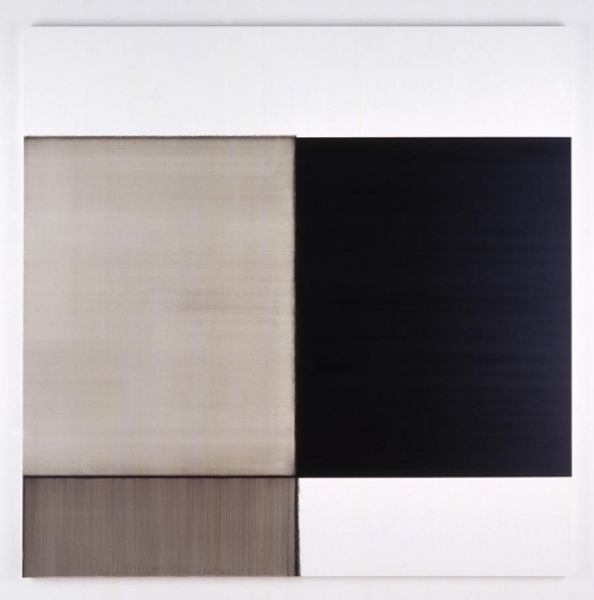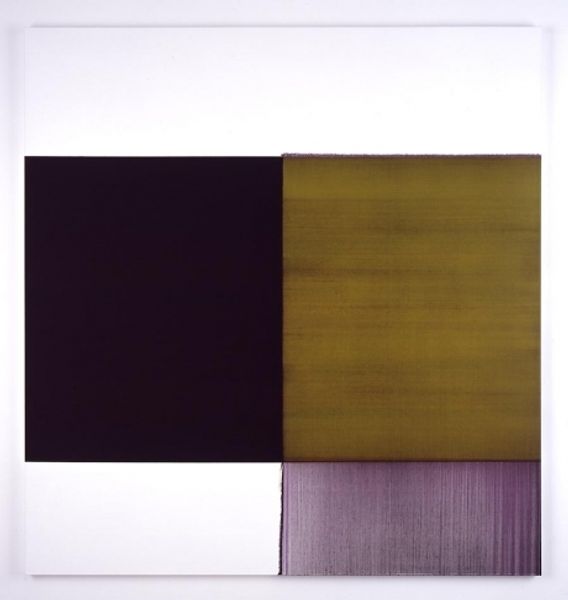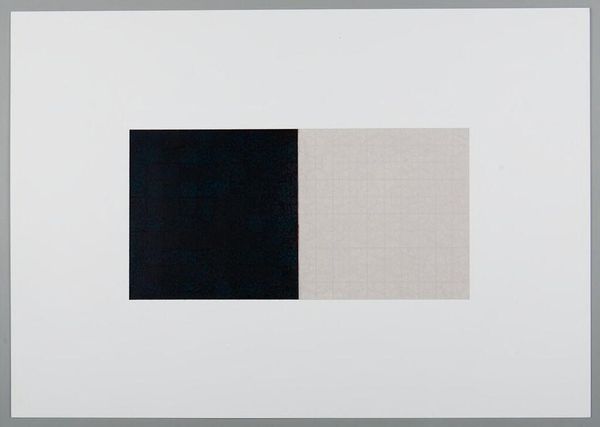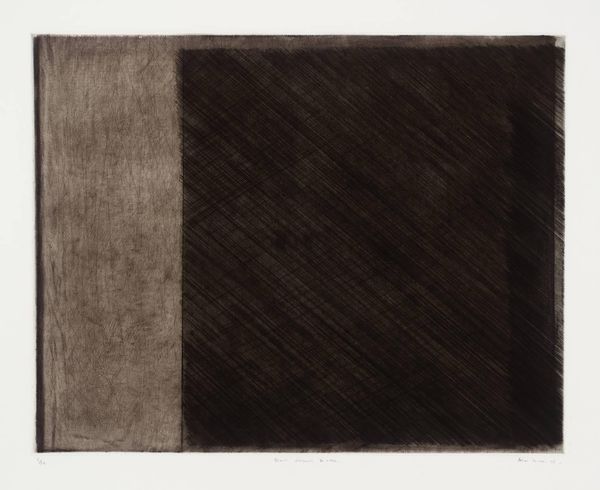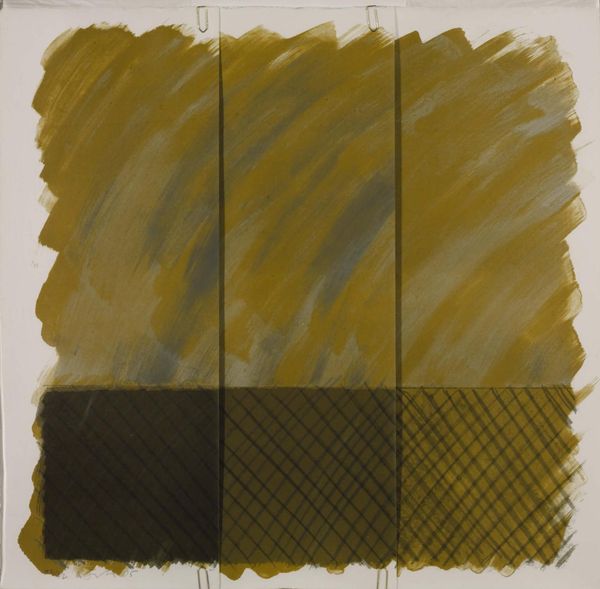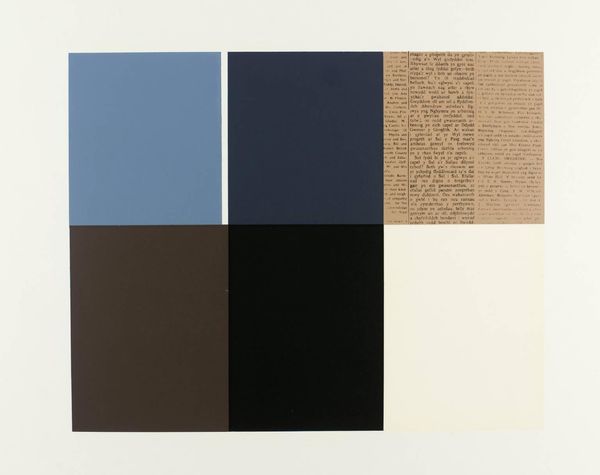
Dimensions: image: 345 x 693 mm
Copyright: © Alan Green | CC-BY-NC-ND 4.0 DEED, Photo: Tate
Curator: Alan Green's "White on Brown" divides our attention into four distinct quadrants. The top left is a void of deepest umber, an anchor that throws the other, lighter squares into stark relief. What do you make of it? Editor: I immediately think of minimalist grids—Agnes Martin comes to mind—but there’s a handmade quality here, an almost tactile roughness that counters the mechanical precision. The textured squares feel almost like woven textiles. Curator: Exactly. Green's process involved layering and scraping, creating a surface that feels both planned and accidental. He was interested in the subtle shifts in tone, how colors interact and how the viewer perceives those relationships. Editor: Knowing that gives it a new dimension. I see the interplay of negative space—the dark quadrant—with the woven textures as a commentary on the limitations of representation itself, almost like a deconstruction of form. Curator: I think it's more intuitive than that. More a meditation on color and surface. The brown and white, the light and dark, feel balanced, like a quiet conversation. Editor: Perhaps. But even quiet conversations can carry subversive weight. Ultimately, I see Green's work as an invitation to interrogate the very nature of seeing. Curator: And for me, it’s a reminder that beauty can be found in the simplest of forms.
